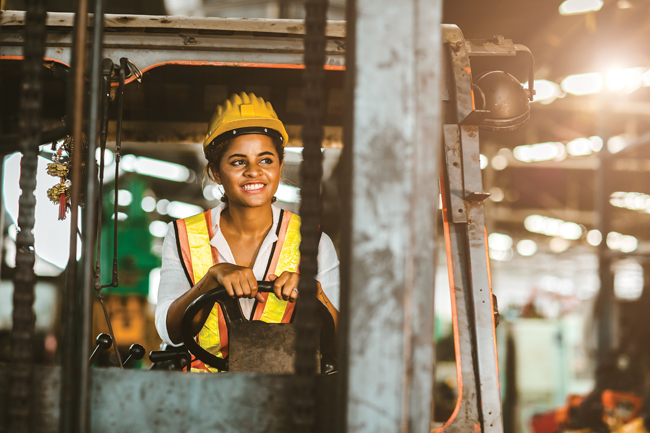
Reframing health and safety for the ‘next normal’
October 7, 2021
By
Lisa McGuire
As restrictions ease, it’s time to rethink complex pandemic safety protocols to keep workers safe while regaining efficiencies.

Creating a culture where workers feel valued and safe — and understand how they contribute to your company’s success — is critical to retaining people. (coffeekai/iStock/Getty Images Plus/Getty Images)
While the pandemic has exacerbated the challenges manufacturers face in Canada and around the world, some issues have been quietly growing for years.
Manufacturing labour gap: Employers are struggling to find and keep skilled talent as vacancies soar with an aging workforce retiring and fewer young workers choosing manufacturing careers.
Supply chain disruptions: Inventory management is in crisis with worldwide supply shortages. Holding too little inventory in this environment risks production schedules, while stockpiling strains cash flow and improper storage introduces new safety risks.
Digitization learning curve: Robotics and automation are accelerating manufacturing towards Industry 4.0. While automation can reduce risk and shrink the manufacturing skills gap, it can be difficult and costly to implement — and can introduce new hazards.
A changing workplace environment: Every industry is adjusting to new work demands, including remote and flexible hybrid work options.
A fourth wave of COVID-19: Employers are weighing human rights concerns against increasing infections and new health orders, and taking new steps to encourage or even require proof of vaccination.
Against this turbulent backdrop, and despite (or because of) the pandemic, demand for domestically manufactured products is surging, requiring innovative approaches to meet consumer expectations while ensuring a healthy and resilient workforce.
Rethinking health, safety and well-being
A strong recovery will require leaders to rethink the way they approach health and safety in the workplace — to create tomorrow’s strong, sustainable, and flexible companies.
COVID-19 vaccination and testing policies are becoming mainstream.
Looking ahead as restrictions ease, it’s time to rethink complex pandemic safety protocols to keep workers safe while regaining efficiencies.
Finding skilled employees may require embracing flexibility. The work-from-home trend is transitioning into hybrid models where possible. While production line workers can’t work from home, now is the time to reconsider meetings and travel in our connected world.
Creating a culture where workers feel valued and safe — and understand how they contribute to your company’s success — is critical to retaining people. Safety and wellness programs that address the whole person help workers feel appreciated and respected on the job.
Partnerships with post-secondary institutions may be a key strategy to direct young workers into skilled manufacturing careers.
Consider upskilling your existing team for more complex roles and broaden your search to look for trainable candidates who may lack experience.
From compliance to wellness: a ‘whole person’ approach
As we emerge from the pandemic, employers will need to refocus efforts to help their people and businesses thrive.
With workers recovering from pandemic impacts on health, morale and stability, a sustainable approach to safety has to include mental health and wellness.
Beyond employee assistance programs (EAPs), this requires making time to re-engage with employees in meaningful ways, and considering new initiatives to ensure they feel safe, valued and cared for at work. Consider partnerships to provide workplace mental health support.
Your safety staff or committee can be your ally in understanding health and safety gaps and regulations, and helping your team navigate change.
Consider adding a skilled health and safety professional to your team or tapping into your health and safety association for support.
As our economy and communities reopen, expand training to address health, safety and wellness.
Making work better (and safer) for people
As you continue to make employee safety and well-being a top priority, look for ways to make your work — and work environment — better for your team.
Become an employer of choice for the next generation of manufacturing workers.
Look for opportunities with automation to address skills gaps and improve safety by tackling higher-risk tasks.
And if you are in a leadership role, take a breath to evaluate the personal toll of leading through a sustained crisis.
Build resilience in yourself and your team, refining your vision and embracing the long view of sustainable business operations to emerge from this crisis safer, more innovative, and vital.
What are the keys to building a sustainable business strategy and thriving safety culture?
I invite you to join us online at the Make it Safe 2021 Conference Oct. 28 to 29, as we explore these topics with safety and business leaders from around the world.
Be a part of the conversation and help redefine the future of work and workplace health and safety.
Lisa McGuire is the CEO of the Manufacturing Safety Alliance in Chilliwack, B.C., and a regular columnist for OHS Canada.